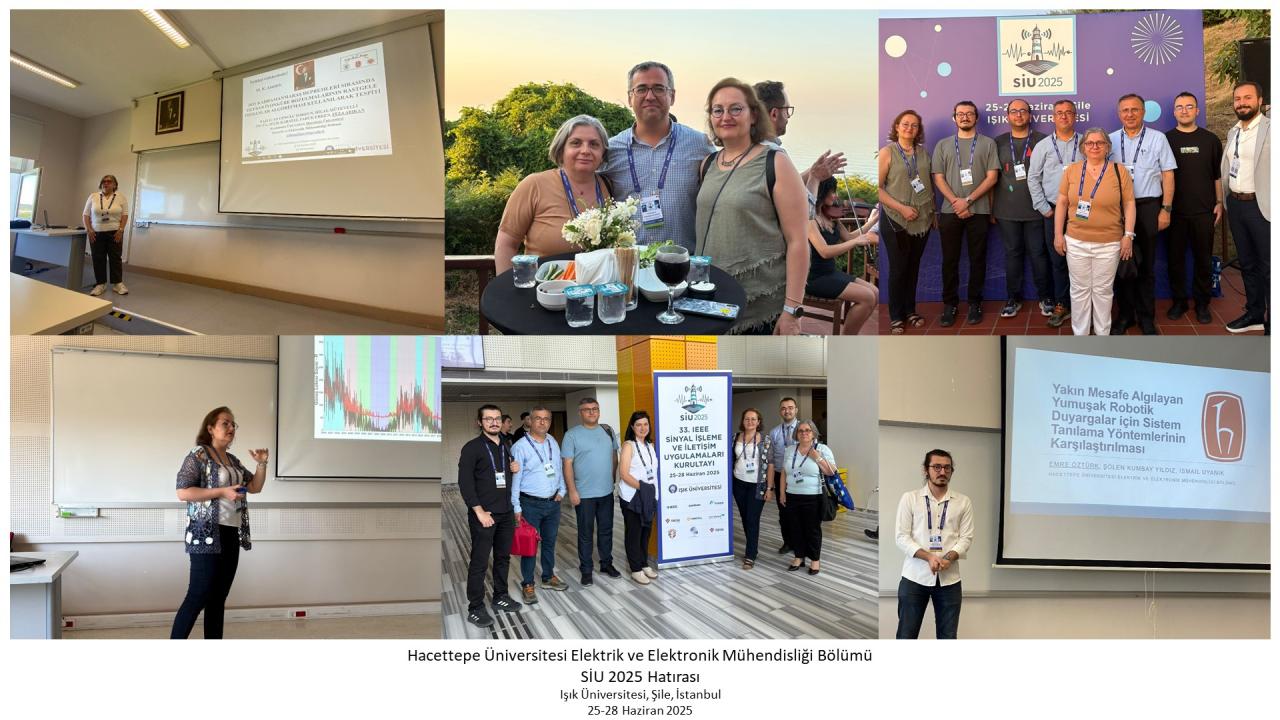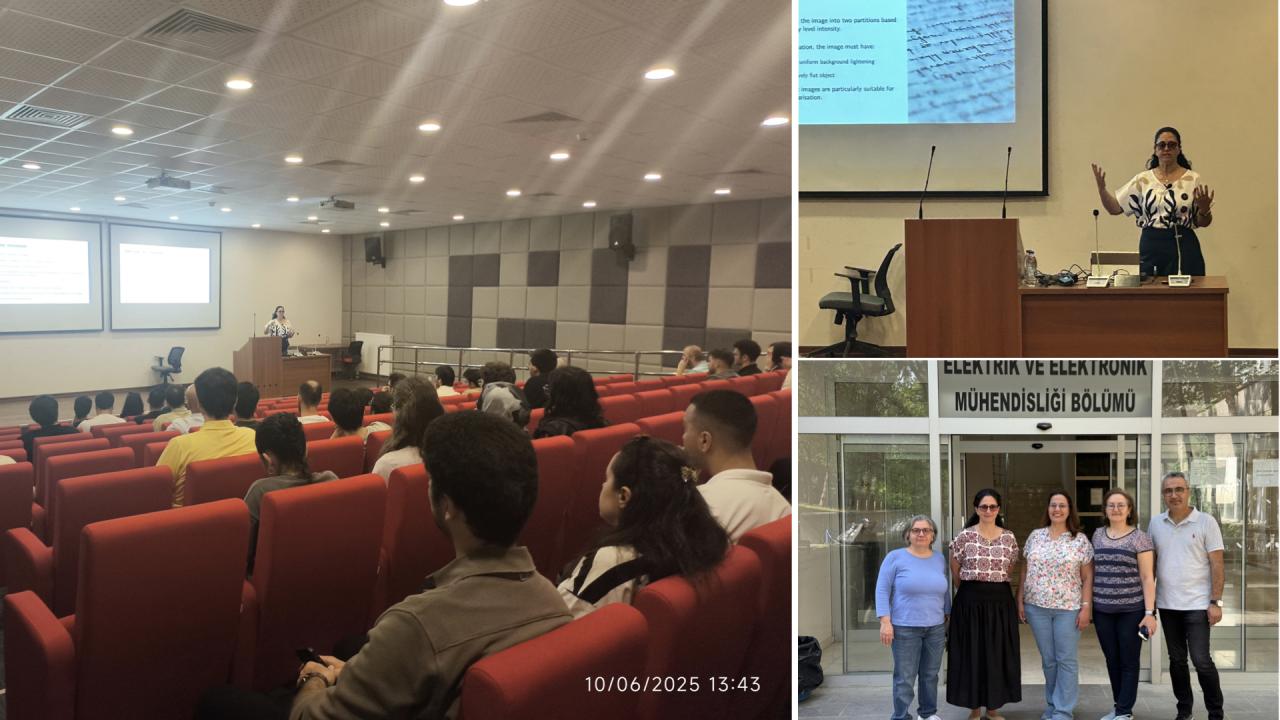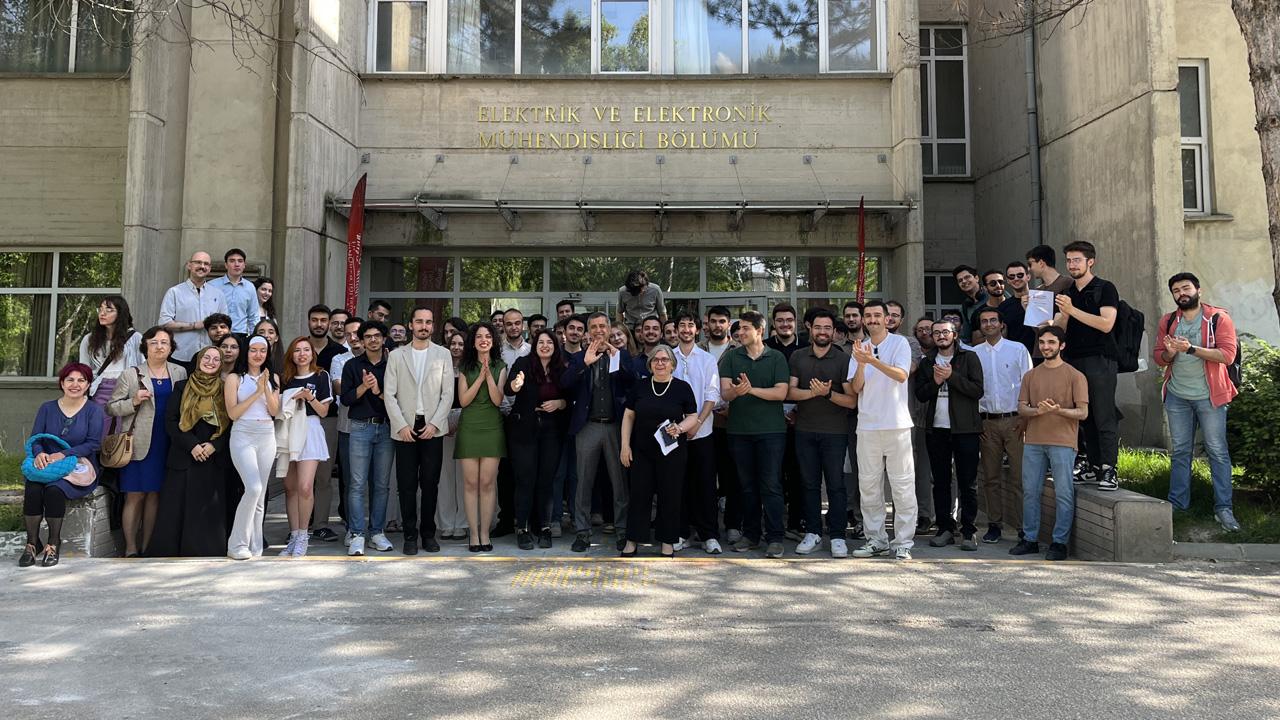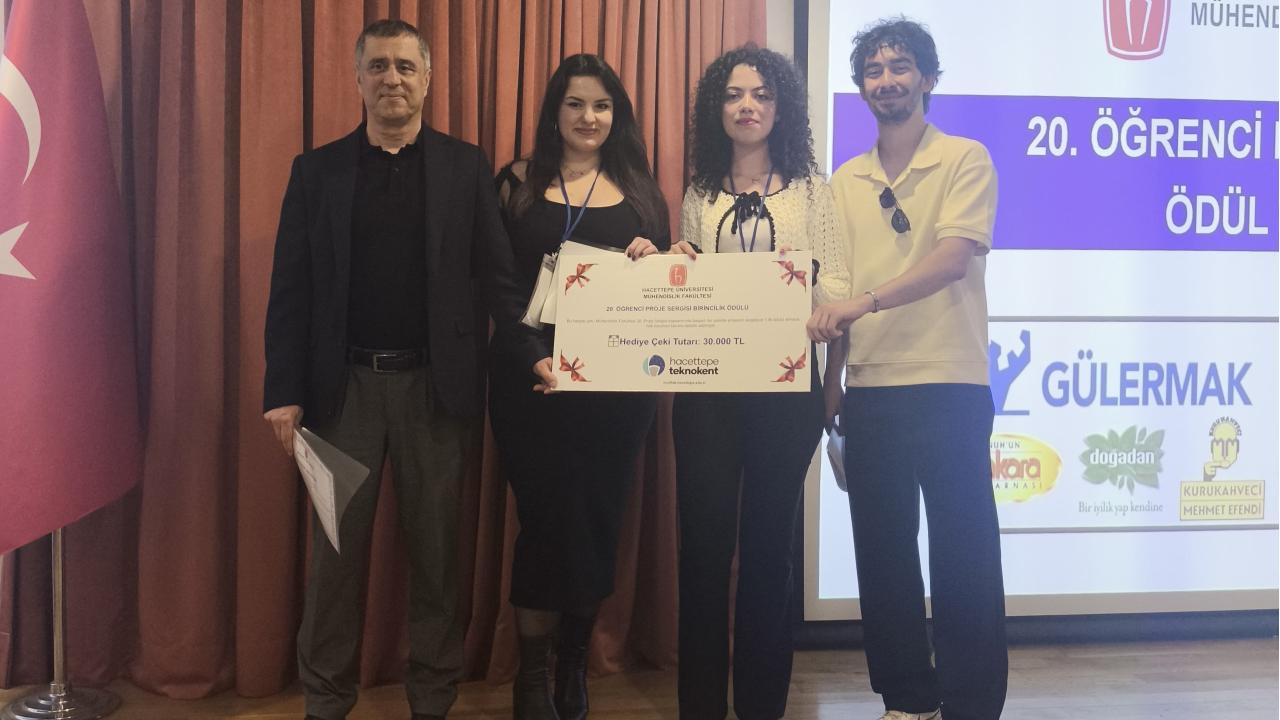News
May 21, 2018
Dr. Murat Demirtaş will give a seminar on Friday, May 25, 2018 at 13:30 in the Conference Hall of our department. The title of the talk is "Innovative Quality Estimation and Coding Methods to Improve the Video Service Quality".
All interested are invited.
The abstract and a short biography of the speaker are as follows.
Abstract
Nowadays, visual communication has a great impact on our lives. People can talk with their family and friends face to face or watch their favorite TV shows anytime via the Internet. According to Cisco's forecasts, 82% of the internet traffic will be video traffic in 2021. Hence, research done to improve the quality of video service will have a great contribution to enhance the life standard of people. A precise measurement of visual quality is crucial to allocate resources properly. Full reference metrics that have been developed until now only consider the case in which reference and test contents have the same spatial resolution. However, devices like smartphones and laptops which have been used for communication and entertainment have different resolutions. In our studies, we have analyzed the limitations of conventional metrics to measure the quality of contents with different spatial resolutions. In addition to that, we have proposed a new image quality metric that overcomes the limitations of the conventional metrics. This metric is based on a statistical modeling in the wavelet domain and advanced signal processing techniques. Next, we have developed a video quality metric that integrates the image quality metric with motion information. Another important issue to provide high-quality video streaming is efficient video coding. To achieve efficient video coding, a video should be compressed as much as possible and encoded stream should be resilient to errors. We have introduced a novel method that is based on using adaptive quantization parameter instead of a constant quantization parameter. This approach provides a remarkable increase in video compression rate. Moreover, we have examined the resilience of compressed bitstream to the single bit error and suggested a mechanism that improves the performance of decoding approach.
Short Biography
Murat Demirtaş received his B.Sc. degree in Electrical and Electronics Engineering from Bilkent University in 2005. He obtained his M.Sc. degree from Middle East Technical University in 2008 and his Ph.D. degree from University of California, Irvine in 2015, respectively. During M.Sc. and Ph.D. he did research on topics related to video coding, communication, and quality. He worked at Qualcomm after his Ph.D. on developing efficient video coding algorithms for next-generation mobile devices. He also worked at Aselsan and AT&T Research Labs during his M.Sc. and Ph.D. studies, respectively. Currently, he is working as a Visiting Professor at TOBB University. His research interests are in video transmission and coding, signal processing, telecommunications, and machine learning.
The abstract and a short biography of the speaker are as follows.
Abstract
Nowadays, visual communication has a great impact on our lives. People can talk with their family and friends face to face or watch their favorite TV shows anytime via the Internet. According to Cisco's forecasts, 82% of the internet traffic will be video traffic in 2021. Hence, research done to improve the quality of video service will have a great contribution to enhance the life standard of people. A precise measurement of visual quality is crucial to allocate resources properly. Full reference metrics that have been developed until now only consider the case in which reference and test contents have the same spatial resolution. However, devices like smartphones and laptops which have been used for communication and entertainment have different resolutions. In our studies, we have analyzed the limitations of conventional metrics to measure the quality of contents with different spatial resolutions. In addition to that, we have proposed a new image quality metric that overcomes the limitations of the conventional metrics. This metric is based on a statistical modeling in the wavelet domain and advanced signal processing techniques. Next, we have developed a video quality metric that integrates the image quality metric with motion information. Another important issue to provide high-quality video streaming is efficient video coding. To achieve efficient video coding, a video should be compressed as much as possible and encoded stream should be resilient to errors. We have introduced a novel method that is based on using adaptive quantization parameter instead of a constant quantization parameter. This approach provides a remarkable increase in video compression rate. Moreover, we have examined the resilience of compressed bitstream to the single bit error and suggested a mechanism that improves the performance of decoding approach.
Short Biography
Murat Demirtaş received his B.Sc. degree in Electrical and Electronics Engineering from Bilkent University in 2005. He obtained his M.Sc. degree from Middle East Technical University in 2008 and his Ph.D. degree from University of California, Irvine in 2015, respectively. During M.Sc. and Ph.D. he did research on topics related to video coding, communication, and quality. He worked at Qualcomm after his Ph.D. on developing efficient video coding algorithms for next-generation mobile devices. He also worked at Aselsan and AT&T Research Labs during his M.Sc. and Ph.D. studies, respectively. Currently, he is working as a Visiting Professor at TOBB University. His research interests are in video transmission and coding, signal processing, telecommunications, and machine learning.
More news










